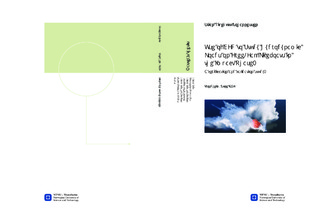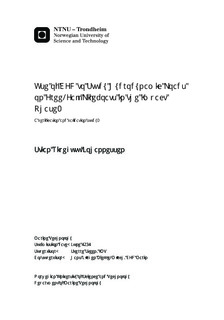| dc.description.abstract | In the past, testing of lifeboat design has been carried out solely by experimental means. However, due to the large number of factors which influence the loads on the lifeboat structure and its occupants, optimization studies by experimental means have become both time-consuming and expensive. In addition, many effects cannot be studied at laboratory scale due to the inability to match all similarity requirements.Recent advances in computational fuid dynamics (CFD) have made it possible toanalyze the lifeboats performance under realistic conditions. By not being dependenton a physical model, investigation of a larger range of hull shapes at a variety of launch conditions can be done more easily and cost-ecient.This thesis explores the possibility of using the CD-adapco's CFD-software STARCCM+(STAR) to predict the performance of free-fall lifeboats during the impact phase.The thesis focuses on verification and validation of the software by studying water impact of different two and three-dimensional rigid and elastic wedges.For the two-dimensional case, 2-D rigid wedges with constant vertical velocity andvarying deadrise angles (4 to 81 degrees) are studied with respect to various slammingparameters presented by Zhao and Faltinsen (1992). In the study, good agreementis found between the solution predicted in STAR and the presented numerical andanalytical solutions. It is found that the slamming pressures are strongly dependent onthe deadrise angle; from 300 Pa for the 81 deg. wedge, to 275 000 Pa for the 4 deg. wedge. It is seen that as the deadrise angle is decreased, better resolution in grid size and time step is required to capture the peak pressures.The three-dimensional case includes both rigid and elastic wedges. For the rigid case, a3-D wedge is modeled so to represent an experimental study conducted by Yettou et al.(2006). It is found that STAR predicts a lower impact velocity than what is found inthe experimental study. Following, the pressures predicted are too low. The differenceis however moderate, and STAR is able to predict the displacement and velocity-timehistories of the wedge in a satisfactory manner. It is noted that the reason for thediscrepancy lies in the prediction of motion through air - and not in the simulation ofimpact and motion in water. It is also noted that refinements in grid size and time stepare not of great importance if only displacements and velocities are to be studied.For the elastic wedge case, four different elastic wedges are studied to exploreSTAR's possibilities and limitations related to fuid-structure interaction (FSI). Noverification or validation with existing theory or experimental data is performed. Aqualitative assessment of the results is however carried out and it is found that STARpredicts displacements, velocities, accelerations, pressures, deflections and stresses in a satisfactory manner. | nb_NO |

